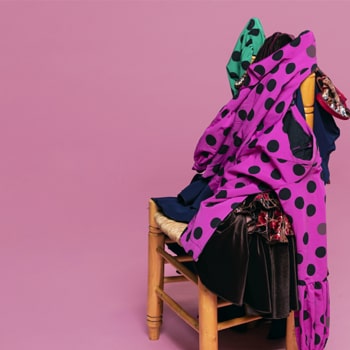R
Rasgueo
The touch of the guitarist on the strings of the guitar, thus causing the vibration of two or more strings simultaneously with the fingers.
Rumba flamenca
It originated in Spain by incorporating some of the rhythmic styles of the Afro-Cuban rumba. The percussion in the flamenco rumba is generally created with more traditional Spanish methods such as castanets, clapping, and more recently, the cajon. The flamenco rumba has proven to be a popular export, enjoying success in other parts of the world such as Latin America, the United States, and France.
S
Sacromonte
A neighborhood in Granada that is also famous for its flamenco shows in the gypsy caves.
Saetas
Traditional Catholic songs in Spain that are the most sung during Holy Week a cappela or as a serenade to the image of the Virgin Mary or Jesus. The passionate singing perhaps includes influences from Arabic and Hebrew styles, showing marked similarities to the traditional call to prayer singing in the Muslim world. The saeta is a passionate display of religious devotion.
Seguiriya
It is one of the most important styles of flamenco music. It is a deep and solemn song form that belongs to the cante jondo family. Along with the soleá, the siguiriyas are two of the most important forms of current flamenco. Many of the most traditional and popular flamenco songs come from these two families of styles.
Sevillanas
They derive from traditional Spanish folk song and dance and developed in southern Spain over the years. Music and dance are very popular in Seville during the April Fair, as well as enjoyed throughout much of Andalusia during the different annual fairs. It is a more festive, optimistic and positive style that is very popular in regional fairs with a festive atmosphere.
Soleá
It originated in southern Andalusia and is a popular style of flamenco, calling for a talented singer accompanied by a guitarist. The lyrics contain the personal anguish and passion that the singer transmits through the melody and the exchange of strong and rhythmic voices, accompanied by a solemn face. The soleá has various sub-styles linked to various towns and cities, which are classified as "soleares de..." Triana (Seville), Cádiz, Jerez as well as Utrera, Alcalá and Lebrija. All of these substyles have different regional variants.
T
Tablao
Modern version of the singing cafes; a place dedicated to celebrating a flamenco show.
Taconeo
The fast and rhythmic footwork of the dancer that can reach amazing speeds and, when done well, is the mark of an excellent dancer.
Tocaora / Tocaor
the flamenco guitarist / the flamenco guitarist.
Tonás
It is one of the oldest forms of flamenco singing. It is an a cappella style (only with voice) that was revived in the 50s and continues to be a popular style to this day.
Toque
The act of playing the flamenco guitar by the guitarist.
Traje
The flamenco dress.
V
Verdiales
They are a variant of the fandango. This musical style comes from Almogía in the province of Málaga.
Villancicos
Spanish carols, traditionally sung at Christmas, seem to allude to flamenco. However, the music and singing have their origins in Spanish popular music and therefore do not belong to flamenco singing.
